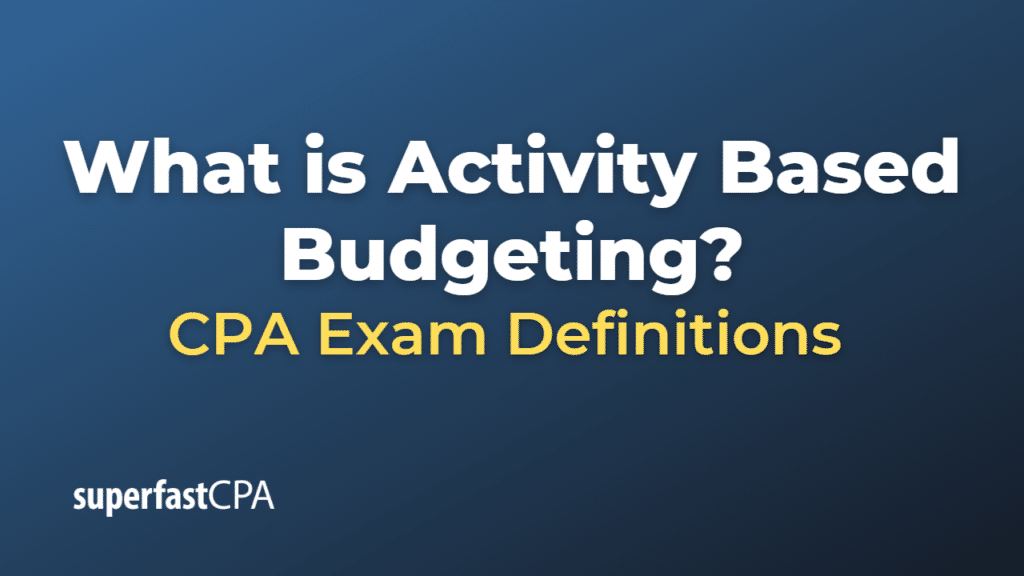Activity Based Budgeting
Activity-Based Budgeting (ABB) is a budgeting method that focuses on the costs of specific activities and resources needed to produce goods or provide services. ABB identifies the activities that consume resources and assigns costs to those activities, rather than focusing on departmental budgets or cost centers.
This method helps organizations better understand their business processes and manage resources more efficiently, leading to improved cost control and decision-making. It is particularly useful for organizations with complex operations, multiple products or services, and significant indirect costs.
Here’s a simplified example of activity-based budgeting:
Imagine a company that produces two products, Product X and Product Y. The company wants to create a budget for the upcoming year. They identify the main activities involved in the production process, such as materials procurement, machine setup, assembly, and quality control.
For each activity, the company estimates the resources required (such as labor, machinery, and materials), along with the associated costs. They also analyze the relationship between the activities and the products, determining how many times each activity is performed for each product.
Example of an Activity Based Budgeting
Here’s a more detailed example of Activity-Based Budgeting (ABB) for a fictional company, ABC Toys:
ABC Toys manufactures two products: Toy Cars and Toy Trains. They want to create a budget for the upcoming year using ABB. They identify the main activities involved in the production process, such as:
- Materials procurement
- Machine setup
- Assembly
- Quality control
To create the budget, they first estimate the resources and costs required for each activity:
- Materials procurement: $20,000 for Toy Cars and $30,000 for Toy Trains
- Machine setup: $100 per setup
- Assembly: $10 per labor hour
- Quality control: $15 per inspection hour
Next, ABC Toys analyzes the relationship between the activities and the products. They find that each product requires the following resources:
Toy Cars:
- 200 machine setups
- 1,000 assembly labor hours
- 200 quality control inspection hours
Toy Trains:
- 300 machine setups
- 1,500 assembly labor hours
- 250 quality control inspection hours
Using this information, they calculate the budgeted costs for each activity and product:
Toy Cars:
- Materials procurement: $20,000
- Machine setup: 200 setups x $100 = $20,000
- Assembly: 1,000 hours x $10 = $10,000
- Quality control: 200 hours x $15 = $3,000 Total cost for Toy Cars: $53,000
Toy Trains:
- Materials procurement: $30,000
- Machine setup: 300 setups x $100 = $30,000
- Assembly: 1,500 hours x $10 = $15,000
- Quality control: 250 hours x $15 = $3,750 Total cost for Toy Trains: $78,750
The total budget for ABC Toys, based on the ABB method, is $131,750 ($53,000 for Toy Cars + $78,750 for Toy Trains). This budget provides the company with a detailed understanding of the costs associated with each activity and product, allowing them to make more informed decisions and allocate resources more efficiently.













